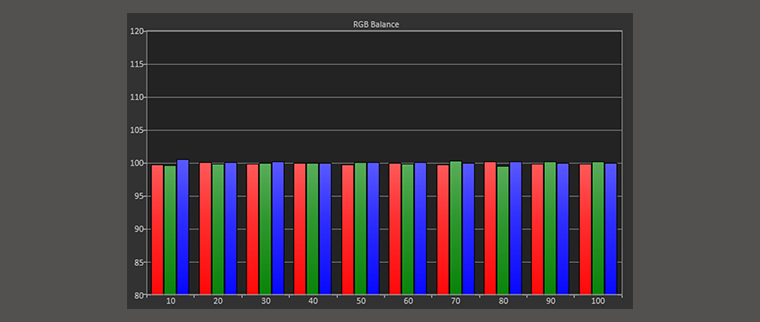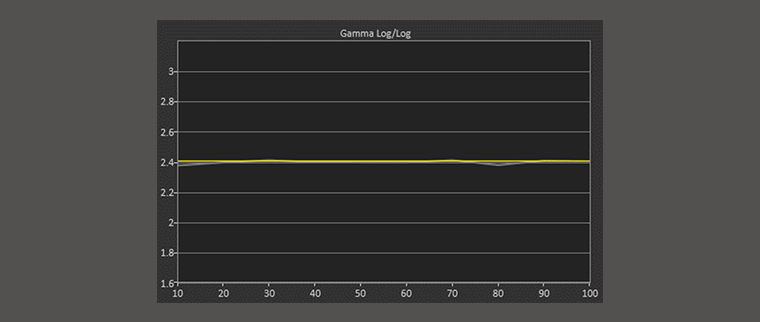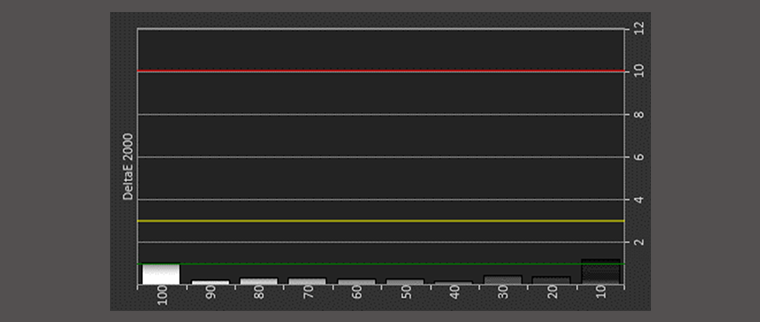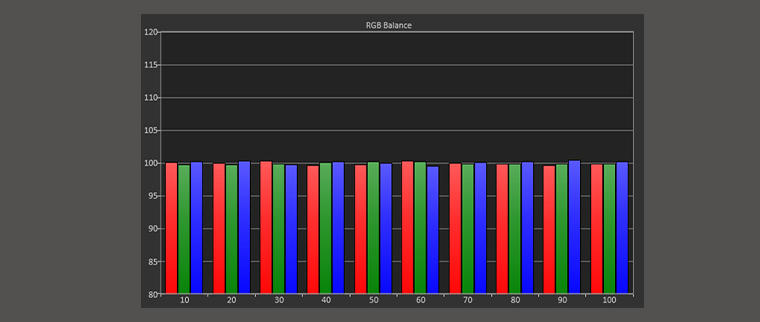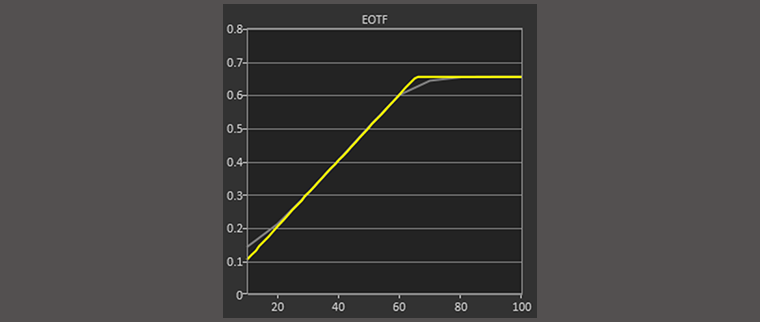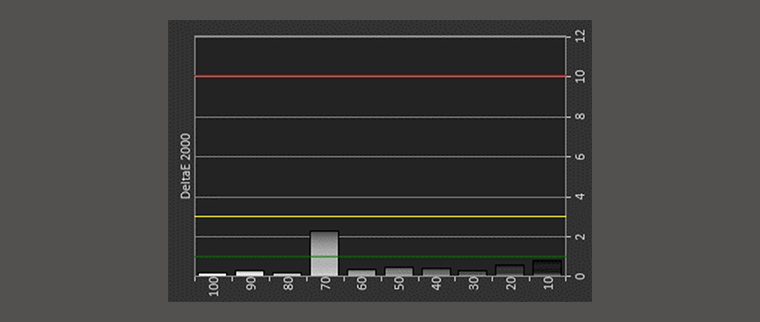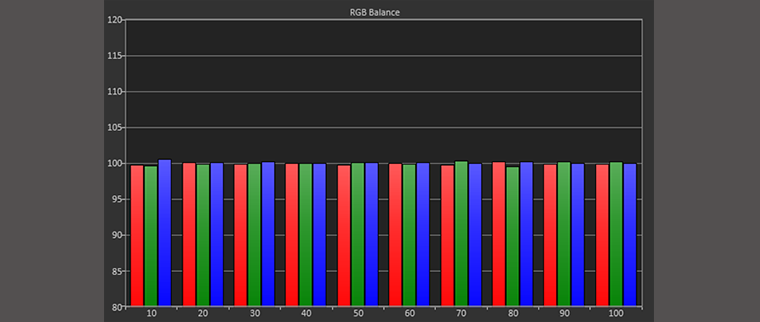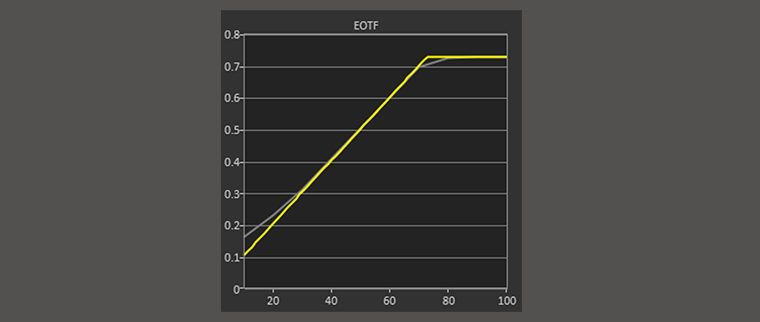For my Best Mode (1080p) calibration I started with Natural mode (lamp medium) and saved it to memory 1. With Contrast set to its default value of 50 the whites clip around 229. I’d like to see white detail to be resolved beyond its max target of 235 to 240 or so. As with previous Epson’s, lowering the Contrast did nothing to improve the clipping. I used to use Super White to remedy this but for some reason Epson has decided to remove this feature. The idea of Super White was to give you white levels up to the PC max level of 255. So, with it gone I have to live with a tiny bit of white clipping.
With the color temp set to 6500 and skin tone to 4 the pre-calibration white balance was a little bit plus blue and minus red and green on the high end of the grayscale with the DeltaE ranging from 1.25 on the low end to 5 at the high end. The 2-point white balance calibration controls (called Custom) work fine but are a bit course especially the lower (offsets), but I was still able to achieve good results with a DeltaE (error) ranging from 1 on the low end to 2.5 on the high end.
Now with the 5050UB Epson has added a new set of adjustments right next to Custom RGB called Grayscale. What we have here is an 8-point white balance control. Wait what? 8-point not 10. Yeah, I tried reaching out to Epson for an explanation as to why 8-points and what would be the best procedure but I never heard back in time. Calibrating 8-points is a challenge and took me a while to figure out. Here what I discovered: level 1 = 0 to 5IRE, level 2 = 20IRE, level 3 = 30IRE, level 4 = 40IRE, level 5 = 50 & 60IRE, level 6 = 70IRE, level 7 = 80IRE & level 8 = 90 & 100IRE. Now after wresting with that the DeltaE’s fell to 1 at 100 & 10IRE with the rest ranging from .1 to .4. That is insane accuracy! Now I did post my Grayscale settings but I do warn you that they may not work for you. It’s really best to have a professional calibrator do this work for your projector and screen. Stopping at my 2-point white balance may be the way to go.
The default gamma (0) was a little on the bright side at a 2.08 average. With my target set for 2.4 I lowered gamma to -2. After the 2-point and 8-point calibration the gamma curve was a super linear 2.4. When it comes to sharpness controls Epson never fails to give you many adjustments options, I recommend you just keep them at their default values. Overall, I was extremely happy with my post Best Mode (1080p) calibration and its 1846 measured lumens.
Delta E is a metric for understanding how the human eye perceives color difference. The term delta comes from mathematics, meaning change in a variable or function. The suffix E references the German word Empfindung, which broadly means sensation. Simply put, look at Delta E as a measure of grayscale/color accuracy. 3 and under is considered ‘Excellent’ and imperceptible by the human eye.

